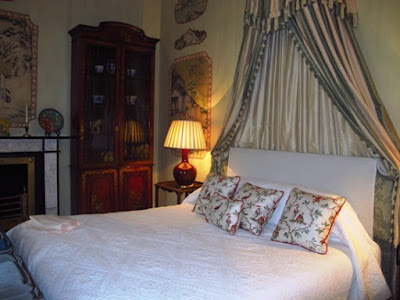 First, take
the smallest size suitcase that works for the length trip you’re going on. If
you’re flying and can fit everything into a carry-on bag, you’ll avoid extra
fees and save time by not having to wait to claim a checked bag on arrival.
First, take
the smallest size suitcase that works for the length trip you’re going on. If
you’re flying and can fit everything into a carry-on bag, you’ll avoid extra
fees and save time by not having to wait to claim a checked bag on arrival.
To conserve packable
space, wear the bulkiest items you’ll need at your destination such as boots or
a heavy coat. Don’t try to cram these into your suitcase because these add
weight as well as take up too much space.
As you begin
to pack, place heavy or odd-sized items like shoes, hair dryer, or mask and
fins (going snorkeling?) on the bottom. Stuff socks and underwear into shoes
and crevices. Some people like to use special packing folders for shirts to
keep them clean and help prevent wrinkles.
Two-gallon zipper bags can also be used to hold items like multiple
pairs of socks or underwear. Before sealing, compress all the air out, and
you’ll be surprised at how much space is saved.
Then place
long items like pants or dresses across the bag. Fold jackets facedown, placing
arms on top. Fold excess length back in a criss-cross pattern, alternating
directions. Some people put tissue paper between layers to protect fancy
clothing and lessen the chance of wrinkling. Knit or polyester items such as
t-shirts or sleepwear can be rolled up and placed on top or along the sides of
the bag.
Tuck belts,
jewelry bag, hair brush, and other small items into empty niches. Finally, use the straps on your suitcase to
hold items in place. If you’re only taking a carry-on bag, keep in mind that
liquids and sharp items are not allowed through security, and you’ll be limited
to the amounts that fit in your quart-sized baggie. Consider using solids for
make-up remover, perfume, and deodorant.
In addition
to your carry-on luggage, remember that you are also allowed a purse, backpack,
or tote bag. I usually take a sturdy shoulder bag that contains everything I’ll
need while on the flight, so I don’t have to scavenge through my carry-on after
it is stored in the overhead bin.
I also try
to leave some free space in the suitcase when departing on a trip, so there’s
room to bring home any purchases I make. By planning ahead, you’ll be able to
take what you need and keep it organized while you travel. 







































